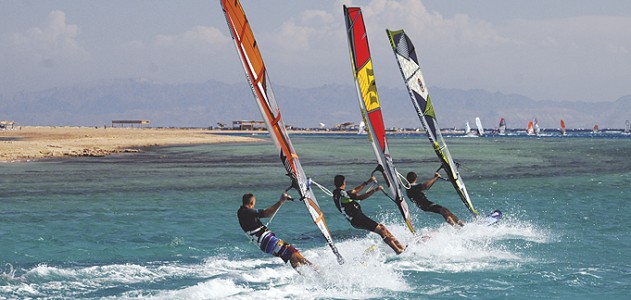THE X-OVER | 2013 6.0M CROSSOVER SAILS TEST REVIEW REPORTS
To accompany our Freestyle Wave board test we put a selection of circa 6.0m crossover sails through their paces. Crossover sails are designed to deliver a blend of performance characteristics and offer versatility to the rider in nearly all conditions – namely for freeride, wave and also freestyle sailing.
Report by Dan Newman Pics by Mark Kasprowicz
(This review originally appeared in the Jan/Feb 2013 issue of Windsurf Magazine. To read the latest features, print and digital subscriptions for readers worldwide are available HERE.)
For this range of use in wind conditions suiting sails less than say, 5.5m or so for most body weights, a modern wavesail should do the trick. But for slightly lighter winds, the crossover sail offers a lot more versatility to maximise performance on a range of water states – namely getting going quicker and going faster than a wavesail, but be easier to chuck about than a small slalom or cammed freeride rig – all of course while powering chunkier hulls than the average waveboard.
This size of sail will feature in many windsurfers’ sail quivers, but often for very different reasons. For some freeride sailors, perhaps based on inland waters, it will feature at the smaller end of their quiver as a high-wind sail for blasting around and will need to deliver top speed and control. Whereas a more wave-orientated rider might use a crossover as their largest sail to get them going out in the surf in lighter wind days or to enjoy some flatter-water summer blasting. As such it needs to deliver plenty of grunt, but without losing the throw-about handling of a dedicated wave or freestyle rig. Freestyle riders may also go for a sail of this size as their largest, although the extra sail area is possibly a bit too big for the really radical stuff.
THE LINE-UP
We put eleven rigs to put through their paces. The Gaastra Cross 6.0, Goya Freesurf 5.7, Naish Moto 6.0, NeilPryde Fusion 6.1, North Volt 5.9, Point 7 HF 5.8, RRD Move 5.7, Severne Gator 5.7, Simmer Icon 5.9, Tushingham Storm 6.0 and the Vandal Addict 6.0. (Scroll down for links to individual reports.)
THE TESTING
Sail testing, as always, starts as soon as we unpack. We begin by examining the build quality and grade of materials used, before weighing and rigging them. Once we’re happy here it’s time for the hard work to start as we get them wet! On the water we’re looking at where the sails pull from, (high/low/forward/aft) how balanced they are, how they handle in a range of conditions and water states, what kind of tuning range they have and how this is best achieved using their out and downhaul settings etc. The level of low and top-end performance is also established as well as, in this case, rating their manoeuvrability for wave or freestyle use and top-speed handling for freeriding.
RIGGING AND TUNING
With our sail testing, we’re nearly always supplied with the recommended masts by the manufacturers as well. These brands obviously want their sails to deliver the highest level of performance possible on test, so 99.9% of the time they send the highest quality mast to be tested in their sail. Every mast used in this test is between 75 – 100% carbon content. This does however usually mean they’re the most expensive choice too, but there are always slightly cheaper options – although we would recommend if buying new to always try and stretch to the best mast possible to maximise the output. Most of the sails in this test are rigged on an RDM (Reduced Diameter Mast) but in many cases you have the option to go for RDM or SDM (Standard Diameter Mast) to suit your personal preference. Different styles of mast can really change the character and handling of the sail. For more manoeuvre-orientated riding, better bottom-end performance and also durability – particularly in the waves – an RDM is best. For top speed blasting and high wind stability, an SDM is often the preferred choice.
LOCATION
The testing was all carried out in Dahab, Egypt and we scored some pretty perfect conditions for these sails while we were there. The wind ranged from around 10 to 25 knots, which was ideal to test what these sails could do on flat water, rolling swell and in rough chop. For the testing we mainly utilised the freestyle wave boards reviewed in this issue, but we also had some larger freeride boards as well for blasting around on.
As this selection of sails has to tick so many boxes, it’s inevitable that certain rigs will have a bias to either of the three main (freeride/wave/freestyle) usage criteria, so there can be no clear-cut winner. Therefore we’ve tried to lay out how each model performed in each area to help you match your own demands and individual user case. Read on to find out which is best for you!
READ THE REVIEWS
Gaastra Cross 6.0
Goya Freesurf 5.7
Naish Moto 6.0
NeilPryde Fusion 6.1
North Volt 5.9
Point 7 HF 5.8
RRD Move 5.7
Severne Gator 5.7
Simmer Icon 5.9
Tushingham Storm 6.0
Vandal Addict 6.0


